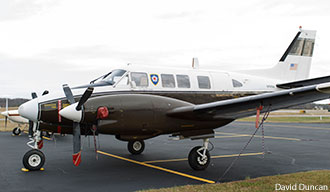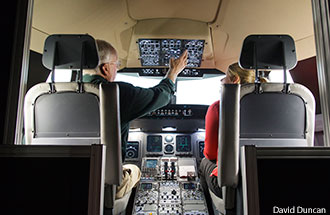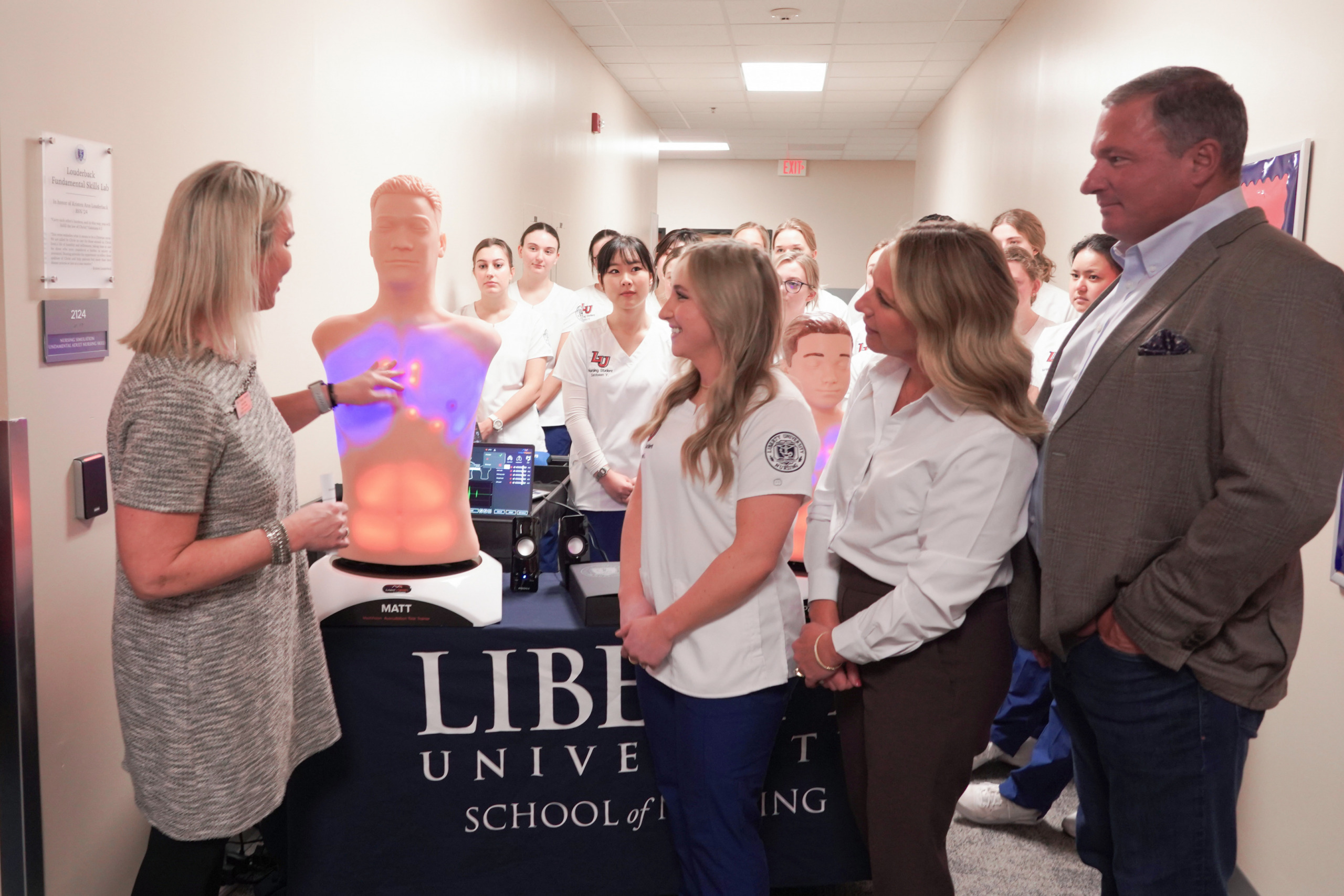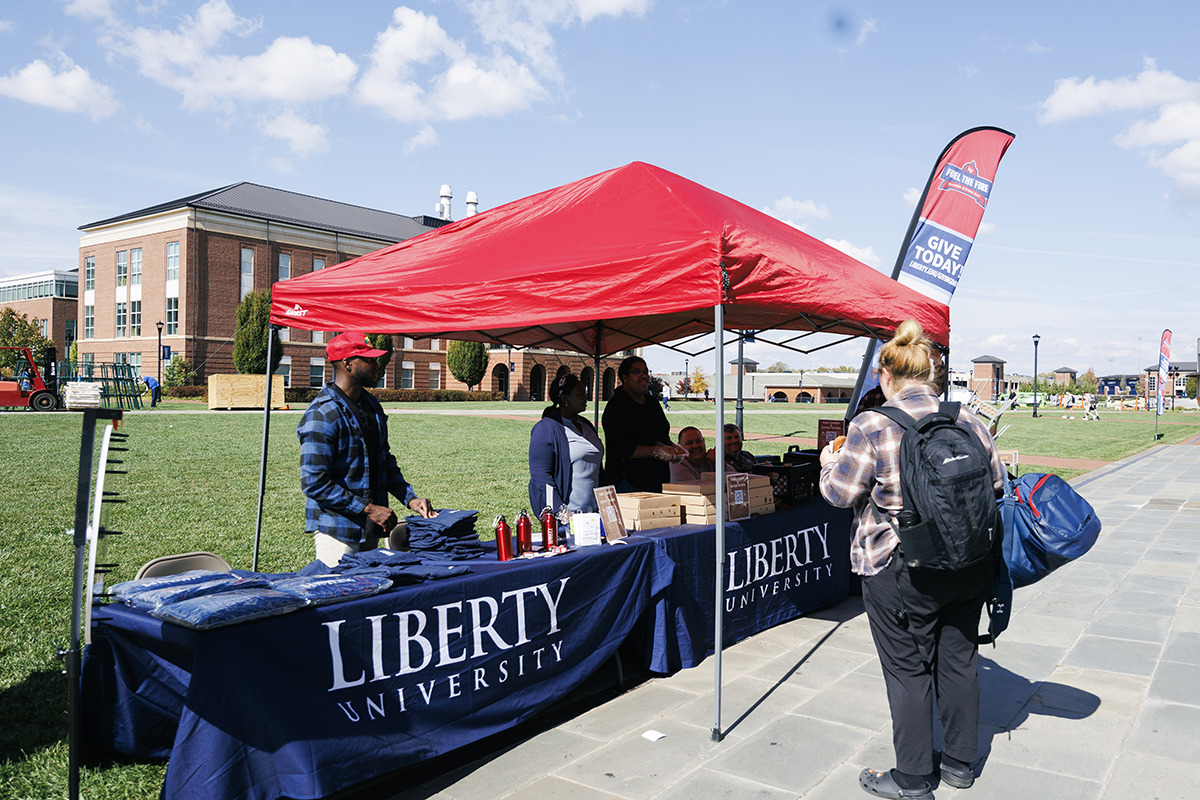Search News Archives
Filter News Articles
Additional Navigation
Donations, new equipment bolster aeronautics program
January 10, 2013 : By Drew Menard/Liberty University News Service

As Liberty University School of Aeronautics soars to national prominence, the program continues to add new equipment and planes to keep pace with its rapid growth.
Generous donations of aircraft have helped bolster the school’s flight training and aviation maintenance technician programs. The newest planes include a recently donated Cessna 172 Skyhawk and a King Air 90 turbine powered aircraft, which was donated by Dynamic Aviation. Liberty has recently acquired three new flight simulators, as well.
The Skyhawk is one of Liberty’s most used aircraft for flight training and will provide more openings for students to take to the skies and log flight hours.
“We have experienced a lot of growth in recent years and that has increased our demand for flight instructors and airplanes,” said Aaron Wilson, director of flight operations. “Having this airplane donated to us has tremendously enabled us to meet the training demands of students.”
The King Air is no longer fit for flight but will be an excellent training tool in Liberty’s Aviation Maintenance Technician Program.
Bob Howell, chair of the program, explained that adding this larger, turbine-powered aircraft with systems and retractable landing gear will allow students to gain valuable hands-on experience with equipment that is expensive to acquire otherwise.
The program is about 60 percent hands-on and already boasts a fine assortment of engines and training equipment, giving students a great transition from school to the workforce.
U.S. Navy Capt. Ernie Rogers, associate dean of the School of Aeronautics, said this program has a 100 percent graduation and job placement rate in a market with extremely high demand.
“It’s neat to see where God’s provided the materials and the equipment for our program, and now the jobs are out there,” he said. “They get the training here and are able then to go out and make a difference in the world through their chosen profession.”

Liberty has invested in several simulators ranging from paper mockups of aircraft control panels and desktop instrument trainers to full motion, state-of-the-art simulators.
The three newest simulators include a fully replicated Cessna C-172 Skyhawk, which is the primary training aircraft, a fully replicated Piper PA-28 Arrow simulator used for advanced training, and a fully replicated Canadair CRJ-200 simulator for jet training.
There are several benefits to having simulators, including giving students a low risk, cost-effective means for flight training.
“They allow us to replicate situations that cannot be performed in the actual airplane and just as importantly, they reduce the cost of training for our students. The new state-of-the art simulators raise the excellence of our program to rival that of any university flight training in the U.S.,” said U.S. Air Force Brig. Gen. Dave Young, dean of the School of Aeronautics.
Another benefit to the devices is that they can be used to train for emergency situations such as inclement weather, engine failure, or fires that a student could not train for in an actual airplane, Rogers said.
“These simulators provide valuable training, exactly like, if not better than, real planes,” he said.
Additionally, the CRJ-200 flight training device is used for Liberty’s partnership with ExpressJet Airlines, the biggest regional airline in the world. The partnership guarantees a job with ExpressJet for every qualified graduate. Students use the jet-training simulator as part of their qualification process.


